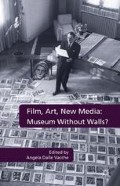Abstract
Jonson’s list of ingredients evokes the weird and marvelous world of the alchemist: the magician who could take these macabre and banal materials and through his knowledge and power turn them into gold. The enduring image of the alchemist’s laboratory, where this transmutation takes place, has become a metaphor for other forms of mysterious creativity and is, one suspects, behind prevailing myths of artistic creativity and our ongoing fascination with the artist’s studio as the alchemic site of artistic transformation. Alchemy was a heady mixture of philosophy, art, and science, the precursor of modern chemistry, and the stuff of the creative imagination. It dealt with illusions, with things not being what they seemed, and with sight’s fallibility in comprehending the true nature of objects. The ultimate goal of the alchemist was the transmutation of matter, of base materials, to gold, and it was this process of transformation and its questioning of the physical universe through formal experimentation that made alchemy an art as much as a science.
Hair o’ the head, burnt clouts, chalk, merds, and clay,
Powder of bones, scalings of iron, glass,
And worlds of other strange ingredients,
Would burst a man to name
Ben Jonson, The Alchemist, 1612
Access this chapter
Tax calculation will be finalised at checkout
Purchases are for personal use only
Preview
Unable to display preview. Download preview PDF.
References
C. Battersby, Gender and Genius: Towards a Feminist Aesthetics (London: Women’s Press; Bloomington, IN: Indiana University Press, 1989).
A. Bazin, “Le Mystère Picasso,” L’Education Nationale (May 1956). As cited in P. Pilard, Henri- Georges Clouzot (Paris: Editions Seghers, 1969) (p. 154).
A. Bazin, “Painting and Cinema,” in What is Cinema?, trans. H. Gray (Berkeley, CA: University of California Press, 1967).
W. Benjamin, “The Work of Art in the Age of Mechanical Reproduction,” in Illuminations, ed. H. Arendt (1973), Introduction by H. Arendt (Suffolk: Fontana/Collins; New York: Harcourt, Brace & World, 1968). (pp. 219–253).
M. -L. Bernaduc, “Picasso et Brassaï: à la Recherche de la Resemblance,” in Picasso vu par Brassaï, Exh. cat. Musée Picasso, Paris, 17 June–28 September 1987 (Paris: Ministère de la Culture et de la Communication: Editions de la Réunion des Musées Nationaux, 1987) (pp. 10–19).
Brassaï, The Artists of My Life, trans. R. Miller (London: Thames and Hudson; New York: Viking Press, 1982).
P. Cabanne, Le siècle de Picasso, 2 vols (Paris: Denoel, 1975).
J. Derrida, Spurs: Nietzsche’s Styles, trans. B. Harlow (Chicago, IL/London: University of Chicago Press, 1979).
M. A. Doane, The Emergence of Cinematic Time: Modernity, Contingency and the Archive (Cambridge, MA/London: Harvard University Press, 2002).
B. Hess, Willem de Kooning, trans. J. Gabriel (Cologne/Los Angeles, CA: Taschen, 2004).
K. L. Kleinfelder, The Artist, His Model, Her Image, His Gaze: Picasso’s Pursuit of the Model (Chicago, IL/London: University of Chicago Press, 1993).
A. Liberman, The Artist in His Studio (1960) (London: Thames and Hudson; New York: Random House, 1988).
National Film Theatre, “Le Mystère Picasso, Painting in Film,” Film notes (London, 1994).
L. Nead, The Female Nude: Art, Obscenity and Sexuality (London/New York: Routledge, 1992).
R. W. Paul, Catalogue of Paul’s animatographs and films (London: R. W. Paul, 1901).
E. Quinn, Picasso at Work: An Intimate Photographic Study by Edward Quinn, Introduction and text by R. Penrose (London: W.H. Allen, 1965).
E. Quinn, Picasso: Photographs from 1951–1972 (Woodbury, N.Y.: Barron’s, 1980).
C. Urban, Urban and Eclipse Films (London: Charles Urban Trading Co. Ltd, 1904–5).
Editor information
Editors and Affiliations
Copyright information
© 2012 Lynda Nead
About this chapter
Cite this chapter
Nead, L. (2012). The Artist’s Studio: The Affair of Art and Film. In: Vacche, A.D. (eds) Film, Art, New Media. Palgrave Macmillan, London. https://doi.org/10.1057/9781137026132_2
Download citation
DOI: https://doi.org/10.1057/9781137026132_2
Publisher Name: Palgrave Macmillan, London
Print ISBN: 978-1-349-32358-6
Online ISBN: 978-1-137-02613-2
eBook Packages: Palgrave Media & Culture CollectionLiterature, Cultural and Media Studies (R0)

